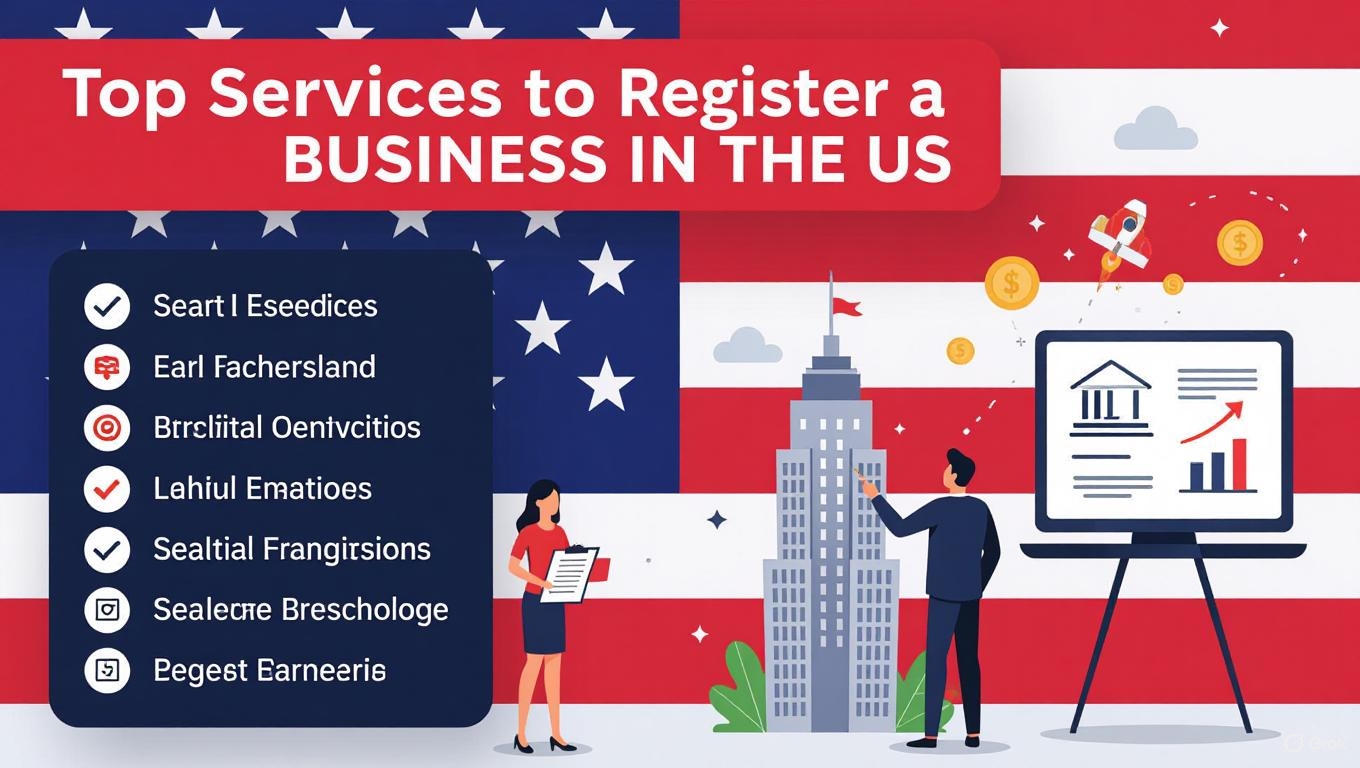Top business trends to watch in 2026” refers to the most influential patterns, innovations, and shifts expected to shape the way businesses operate, compete, and grow in the year 2026. These trends reflect advancements in technology, changes in consumer behavior, economic developments, and global market dynamics that will redefine business strategies and priorities.
Why 2026 Will Be a Pivotal Year for Business
The business landscape is experiencing unprecedented transformation driven by technology and changing consumer expectations. Companies must adapt quickly to remain competitive.
Global economic shifts and regulatory changes are reshaping industry standards. Businesses that anticipate trends will gain significant competitive advantages.
Innovation cycles are accelerating, making strategic foresight more valuable than ever. Early adopters of emerging trends often dominate their markets.
AI and Automation: The Game-Changing Revolution
Artificial Intelligence Integration Across Industries
AI adoption moves beyond tech companies into traditional industries. Manufacturing, healthcare, and finance embrace intelligent automation for efficiency gains.

Machine learning algorithms optimize supply chains, predict customer behavior, and automate routine tasks. These capabilities free human workers for strategic activities.
Natural language processing transforms customer service through sophisticated chatbots. AI assistants handle complex queries while reducing operational costs.
AI Benefits for Businesses:
- Reduced operational costs through automation
- Improved decision-making with data-driven insights
- Enhanced customer experiences and satisfaction
- Increased productivity and efficiency gains
Intelligent Process Automation (IPA)
IPA combines AI with robotic process automation for complex workflows. This technology handles end-to-end processes requiring human-like judgment.
Financial services use IPA for loan processing and risk assessment. Healthcare organizations automate patient scheduling and insurance claims processing.
Legal firms deploy AI for contract analysis and document review. These applications significantly reduce time and costs while improving accuracy.
AI Ethics and Responsible Implementation
Companies develop ethical AI frameworks to guide responsible technology deployment. Transparency and fairness become competitive differentiators in AI adoption.
Regulatory compliance around AI usage tightens across industries globally. Businesses invest in governance structures to manage AI risks.
Bias detection and mitigation tools become standard in AI systems. Fair algorithms protect brand reputation and ensure regulatory compliance.
Sustainability and ESG: The New Business Imperative
Environmental Sustainability as Competitive Advantage
Climate change regulations force businesses to adopt sustainable practices. Carbon neutrality becomes a requirement rather than optional initiative.
Circular economy principles reshape product design and manufacturing processes. Companies reduce waste while creating new revenue streams.
Renewable energy adoption accelerates as costs decrease below traditional sources. Solar and wind power become standard business infrastructure.
Sustainability Benefits:
- Reduced operational costs through efficiency improvements
- Enhanced brand reputation and customer loyalty
- Access to ESG-focused investment capital
- Regulatory compliance and risk mitigation
Social Responsibility and Stakeholder Capitalism
Businesses balance shareholder returns with broader stakeholder interests. Employee welfare, community impact, and customer value receive equal priority.
Diversity, equity, and inclusion programs become business performance indicators. Inclusive workplaces demonstrate measurable productivity and innovation improvements.
Supply chain transparency addresses ethical sourcing and labor practices. Consumers demand accountability throughout entire value chains.
ESG Reporting and Measurement
Standardized ESG metrics become mandatory for public companies. Investors require detailed sustainability reporting for funding decisions.
Third-party ESG rating agencies influence investment flows significantly. High ratings attract capital while poor scores limit access.
Blockchain technology enables transparent and verifiable ESG reporting. Immutable records build trust with stakeholders and regulators.
Remote Work Evolution and Hybrid Models
Advanced Collaboration Technologies
Virtual reality meetings create immersive collaboration experiences comparable to in-person interactions. Spatial computing revolutionizes remote teamwork.
AI-powered scheduling optimizes hybrid work arrangements for maximum productivity. Smart systems balance in-office and remote time effectively.
Digital workspaces integrate all business applications into unified platforms. Seamless tool integration improves remote work efficiency.
Performance Management in Distributed Teams
Results-oriented performance metrics replace time-based evaluation systems. Output quality and goal achievement become primary success measures.
Continuous feedback tools provide real-time performance insights. Regular check-ins replace annual reviews for better employee development.
Employee wellness programs adapt to remote work challenges. Mental health support and work-life balance become business priorities.
Global Talent Access and Management
Geographic barriers to talent acquisition disappear with remote work. Companies access worldwide talent pools for specialized skills.
Cross-border employment regulations evolve to support distributed workforces. Legal frameworks adapt to new employment relationship models.
Cultural competency training becomes essential for global teams. Diverse perspectives drive innovation and market understanding.
Digital Transformation and Technology Adoption
Cloud-First Business Strategies
Cloud computing becomes the default infrastructure choice for businesses. On-premise systems migrate to scalable cloud platforms rapidly.
Multi-cloud strategies prevent vendor lock-in while optimizing costs. Businesses distribute workloads across multiple cloud providers strategically.
Edge computing brings processing power closer to data sources. This reduces latency while improving application performance significantly.
Cybersecurity and Data Protection
Zero-trust security models replace traditional perimeter-based approaches. Every user and device requires verification regardless of location.
Privacy-preserving technologies protect customer data while enabling analytics. Businesses balance personalization with privacy requirements effectively.
Cyber insurance becomes essential business protection as threats increase. Companies invest heavily in security infrastructure and training.
Digital Customer Experiences
Omnichannel customer journeys integrate all touchpoints seamlessly. Consistent experiences build loyalty and reduce customer acquisition costs.
Personalization engines deliver individualized content and recommendations automatically. Machine learning improves targeting accuracy continuously.
Voice commerce and conversational interfaces gain mainstream adoption. Natural language interactions simplify complex purchasing decisions.
Financial Technology and Business Operations
Digital Payment Evolution
Cryptocurrency adoption expands beyond speculation into business operations. Companies use digital currencies for international transactions and treasury management.
Buy-now-pay-later services reshape consumer purchasing behavior across industries. Flexible payment options increase conversion rates and average order values.

Central bank digital currencies (CBDCs) begin implementation globally. Government-backed digital money transforms business payment systems.
Financial Management and Analytics
Real-time financial dashboards provide instant business performance insights. CFOs make faster, more informed decisions with current data.
Understanding modern financial products helps businesses optimize cash management strategies. Smart financial planning improves profitability and growth.
Automated bookkeeping reduces administrative costs while improving accuracy. AI-powered accounting systems handle routine financial tasks efficiently.
Business Credit and Financing
Alternative lending platforms provide faster business financing options. Technology-enabled underwriting accelerates loan approval processes significantly.
Protecting business credit scores becomes crucial for growth financing. Good credit management enables better funding terms.
Invoice factoring and supply chain financing improve cash flow. Technology platforms connect businesses with flexible financing solutions.
Customer Experience and Personalization
Hyper-Personalization Through Data Analytics
Advanced analytics create detailed customer profiles from multiple data sources. Businesses understand individual preferences and behaviors precisely.
Predictive modeling anticipates customer needs before they express them. Proactive service delivery enhances satisfaction and loyalty significantly.
Dynamic pricing adjusts in real-time based on demand and customer segments. Personalized pricing maximizes revenue while maintaining fairness.
Conversational Commerce and Social Selling
Social media platforms evolve into comprehensive commerce ecosystems. Customers discover, evaluate, and purchase products without leaving platforms.
Live streaming commerce combines entertainment with shopping experiences. Interactive selling formats increase engagement and conversion rates.
Influencer partnerships become sophisticated brand collaboration programs. Authentic endorsements drive purchasing decisions among target audiences.
Customer Data Privacy and Trust
First-party data collection strategies replace third-party cookies. Businesses build direct relationships with customers through value exchanges.
Consent management platforms ensure regulatory compliance while maintaining functionality. Transparent data practices build customer trust and loyalty.
Customer data portability gives individuals control over personal information. Businesses that respect privacy gain competitive advantages.
Workforce Development and Skills Evolution
Continuous Learning and Reskilling
Rapid technological change requires constant skill updates throughout careers. Companies invest in employee development to maintain competitiveness.
Micro-learning platforms deliver bite-sized training modules for busy professionals. Just-in-time learning improves skill application and retention.
AI-powered learning paths personalize professional development programs. Adaptive systems identify skill gaps and recommend targeted training.
New Job Categories and Roles
Emerging technologies create entirely new job categories and career paths. AI trainers, sustainability managers, and remote work coordinators gain importance.
Human-AI collaboration becomes a critical workplace skill. Workers learn to leverage AI tools while maintaining human judgment.
Digital literacy becomes as fundamental as traditional literacy. Basic technology skills are required for most professional roles.
Gig Economy and Flexible Work Arrangements
Project-based work becomes more common across professional services. Companies access specialized skills without long-term employment commitments.
Freelancer management platforms streamline contractor relationships and payments. Technology simplifies compliance and performance tracking.
Benefit portability solutions support gig workers with healthcare and retirement. New models adapt traditional benefits to flexible work arrangements.
Healthcare and Wellness in Business
Workplace Mental Health Initiatives
Employee mental health becomes a business priority and competitive advantage. Companies invest in comprehensive wellness programs and support systems.
Stress management and burnout prevention programs reduce turnover costs. Healthy employees demonstrate higher productivity and engagement levels.
Mental health days and flexible schedules accommodate individual wellness needs. Progressive policies attract and retain top talent.
Telemedicine and Remote Healthcare
Corporate telemedicine programs provide convenient employee healthcare access. Remote consultations reduce time away from work significantly.
Wearable health devices monitor employee wellness and predict health issues. Proactive health management reduces insurance costs and absences.
Ergonomic assessments ensure healthy remote work environments. Proper workspace setup prevents injuries and improves productivity.
Supply Chain Innovation and Resilience
Smart Supply Chain Technologies
IoT sensors provide real-time visibility throughout supply chain networks. Businesses track inventory, shipments, and conditions continuously.
Blockchain technology creates tamper-proof supply chain records. Transparency builds customer trust and ensures product authenticity.
Predictive analytics anticipate supply chain disruptions before they occur. Advanced planning prevents shortages and reduces costs.
Nearshoring and Supply Chain Diversification
Companies reduce dependence on single-source suppliers and regions. Geographic diversification improves resilience against disruptions.
Regional manufacturing reduces transportation costs and delivery times. Local production also supports sustainability goals and regulations.
Strategic inventory management balances costs with availability requirements. Smart systems optimize stock levels across multiple locations.
Industry-Specific Transformation Trends
Retail and E-commerce Evolution
Augmented reality try-before-buy experiences reduce return rates significantly. Virtual fitting rooms and product visualization improve customer confidence.
Subscription commerce models provide predictable revenue streams. Recurring billing relationships increase customer lifetime value.
Social commerce integration makes shopping seamless within social platforms. Native purchasing reduces friction in customer journeys.
Manufacturing and Industry 4.0
Smart factories use AI and IoT for autonomous production optimization. Predictive maintenance prevents equipment failures and downtime.
3D printing transforms prototyping and custom manufacturing capabilities. On-demand production reduces inventory costs and waste.
Digital twins create virtual replicas of physical assets and processes. Simulation and modeling optimize performance before implementation.
Financial Services Modernization
Open banking APIs enable third-party financial service integrations. Customers access comprehensive financial services through single platforms.
Robo-advisors democratize investment management for smaller accounts. Automated investing reduces costs while improving accessibility.
Regulatory technology (RegTech) automates compliance monitoring and reporting. AI systems ensure adherence to complex regulatory requirements.
Preparing Your Business for 2026 Trends
Strategic Planning and Trend Integration
Develop flexible strategic plans that accommodate rapid change. Scenario planning helps businesses prepare for multiple future possibilities.
Create innovation labs or dedicated teams for trend exploration. Separate units can experiment without disrupting core operations.
Proper business registration and structure supports adaptation to new trends. Flexible legal structures enable quick pivots and partnerships.
Technology Investment and Implementation
Prioritize technology investments based on business impact and readiness. Staged implementation reduces risk while building capabilities.
Partner with technology vendors and consultants for expertise access. External partnerships accelerate implementation timelines significantly.
Develop internal technology capabilities through hiring and training. In-house expertise enables better vendor management and innovation.
Change Management and Cultural Adaptation
Build change-ready organizational cultures that embrace continuous improvement. Agile mindsets enable faster response to market shifts.

Communicate trend implications clearly throughout the organization. Understanding drives better adoption and implementation success.
Measure and celebrate successful trend adoption to reinforce positive behaviors. Recognition programs encourage continued innovation and adaptation.
Frequently Asked Questions (FAQs)
What are the most important business trends for 2026?
The top trends include AI integration across all business functions, mandatory sustainability practices, evolved remote work models, accelerated digital transformation, and hyper-personalized customer experiences. These trends are interconnected and reinforce each other.
How will AI impact small businesses in 2026?
AI will become accessible to small businesses through affordable cloud-based tools and platforms. Small companies will use AI for customer service, marketing automation, financial management, and operational optimization without requiring large technology investments.
Why is sustainability becoming mandatory for businesses?
Regulatory requirements, investor demands, and consumer expectations are driving mandatory sustainability practices. Companies face financial penalties for non-compliance and lose access to capital and customers without strong ESG performance.
How should businesses prepare for remote work evolution?
Invest in collaboration technologies, develop results-based performance metrics, create inclusive virtual cultures, and ensure cybersecurity for distributed teams. Focus on outcomes rather than location-based work requirements.
What digital transformation priorities should businesses focus on?
Prioritize cloud migration, cybersecurity enhancement, customer experience digitization, and data analytics capabilities. Start with customer-facing improvements that generate immediate value and build internal capabilities gradually.
How will customer expectations change in 2026?
Customers will expect instant, personalized experiences across all touchpoints. Privacy-conscious consumers will demand transparency about data usage while expecting relevant, individualized service and product recommendations.
What skills will be most valuable for workers in 2026?
Critical thinking, digital literacy, emotional intelligence, adaptability, and human-AI collaboration skills will be most valuable. Technical skills combined with uniquely human capabilities create the most career opportunities.
How can businesses balance innovation with financial stability?
Use staged investment approaches, partner for expertise access, focus on high-impact improvements, and maintain strong financial management. Balance risk-taking with prudent financial planning and cash flow management.
Bottom Line
The business trends shaping 2026 represent both significant opportunities and challenges for organizations of all sizes. Success requires proactive adaptation, strategic investment, and a commitment to continuous learning and improvement.
Companies that embrace AI integration, sustainability practices, and digital transformation will gain competitive advantages over those that resist change. The convergence of these trends creates powerful synergies for businesses that approach them holistically.
Preparation starts now with strategic planning, technology investment, and cultural development. Organizations that begin adapting today will be positioned to thrive in 2026’s transformed business landscape while those that wait may struggle to catch up.



